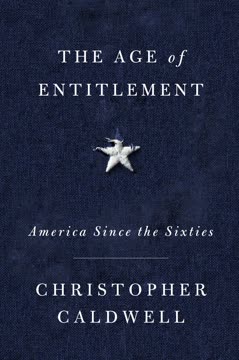Key Takeaways
1. The 1960s: A Constitutional Revolution Fueled by Kennedy's Legacy
The changes of the 1960s, with civil rights at their core, were not just a major new element in the Constitution. They were a rival constitution, with which the original one was frequently incompatible—and the incompatibility would worsen as the civil rights regime was built out.
A New Order Emerges. The mid-1960s marked a profound shift in American life, driven by moral crusades like the civil rights movement. This era, often romanticized for its heroism, fundamentally reordered national politics, public etiquette, and official morality. The author argues that these changes were not mere reforms but constituted a "rival constitution," increasingly at odds with the original 1788 framework.
Kennedy's Assassination as Catalyst. President John F. Kennedy's assassination in 1963, while not the sole cause, significantly accelerated these transformations. The national grief that followed empowered leaders like Lyndon B. Johnson to push through sweeping legislation, such as the Civil Rights Act of 1964 and the Voting Rights Act of 1965, as memorials to the slain president. This period saw:
- Women entering previously male-dominated roles.
- Sex becoming untethered from tradition.
- Previously unwanted immigrants being welcomed.
- Ambitious plans for American power abroad.
Costs and Contradictions. While many Americans embraced these changes as a gift, they came with staggering costs in money, freedom, rights, and social stability, distributed unevenly across classes and generations. The moral prestige and resources of the American elite were almost limitless, allowing them to sweep aside dissent and multiply their power, leading to a growing incompatibility between the two constitutional orders.
2. Civil Rights: A New Constitutional Order Eroding Traditional Freedoms
Just as assuming that two parallel lines can meet overturns much of Euclidean geometry, eliminating freedom of association from the U.S. Constitution changed everything.
Expansive Federal Power. The Civil Rights Act of 1964, intended to dismantle Jim Crow, became an unprecedented instrument of federal enforcement. It empowered the government to scrutinize and reform institutions, creating agencies like the Equal Employment Opportunity Commission (EEOC) with broad powers to investigate and litigate. This expanded federal reach transformed the country constitutionally, culturally, and demographically, becoming the largest domestic undertaking in American history.
Erosion of Association. The pursuit of racial equality, particularly through judicial interpretations, inadvertently curtailed traditional constitutional freedoms. The Supreme Court's Brown v. Board of Education decision, for instance, focused on "intangible considerations" of inferiority rather than strict legal equality, troubling even ardent opponents of segregation. Legal scholars like Herbert Wechsler warned that denying freedom of association to some (segregationists) imposed association on others, creating a constitutional dilemma.
- The "Mrs. Murphy" anecdote highlighted concerns about federal intrusion into private property rights.
- A. Philip Randolph argued that "the sanctity of private property takes second place to the sanctity of the human personality."
From Civil to Human Rights. The movement evolved from seeking "civil rights" (access to ordinary citizenship rights) to demanding "human rights," a broader, more confrontational concept. Figures like Malcolm X and later Martin Luther King Jr. reframed the struggle as part of a global revolution against American values, not just for inclusion within them. This shift laid the groundwork for a constantly churning system of political reform, where definitions of justice continually broadened.
3. Feminism and the Sexual Revolution: Reshaping Gender and Family
Feminism had to contend not just against bigotry but also against nature.
Post-War Reversal for Women. World War II, while integrating blacks, reversed gains for women, shunting them from jobs to make way for returning male veterans. This led to a "feminine mystique" of domestic confinement, which Betty Friedan's 1963 book attacked. However, public understanding of "women's lib" was slow, with many women not identifying with feminist grievances initially.
Sexual Liberation and Demographic Shifts. The 1960s and 70s saw a surge in eroticism, fueled by:
- The prestige of manliness post-WWII.
- The introduction of the birth control pill in 1960.
- An unprecedented concentration of sexually active Baby Boomers, creating a demographic imbalance where eligible women outnumbered men, leading to more "male" sexual norms.
This era saw figures like Hugh Hefner promoting a "sexual revolution" that, ironically, often aligned with feminist aspirations for greater freedom, albeit from a male-centric perspective.
Abortion and Redefining Destiny. The Supreme Court's Roe v. Wade decision in 1973 legalized abortion, profoundly altering the cost-benefit calculations of love and destiny. This decision, though politically divisive and legally "sloppily argued," became a cornerstone of modern freedom. It suppressed basic anthropological conditions, removing a "rein on sexuality" and leading to a society that would generate irresistible demands for further sexual freedoms, ultimately challenging traditional family structures and moralities.
4. The Vietnam War: Elite Dysfunction and the Class Divide
It was the war itself, and not the protests against it, that was the sister movement to the Civil Rights Act and the Great Society.
Technocratic Hubris. The Vietnam War, initiated by presidential deceit, was managed by a technocratic elite, exemplified by Secretary of Defense Robert McNamara. He applied corporate "systems management" techniques to war, prioritizing quantifiable metrics over human realities, leading to "mad rationality" and "lunatic realism." This approach exposed a deep dysfunction within the American establishment, which saw the war as complementary to domestic Great Society programs, both aiming to impose order on intractable realities.
A Weak Home Front. Despite official optimism, Americans harbored early suspicions that the war was unwinnable, leading to a "consensus for stalemate." Public opinion polls showed a desire for a "compromise peace settlement" and UN intervention, even as violence escalated. This "weak rear" contrasted sharply with the military's battlefield heroism, which was overshadowed by incidents of indiscipline and a sense of betrayal among soldiers.
Class Divide and Elite Empowerment. The war created a stark class divide: working-class and poor Americans disproportionately fought, while university-educated elites largely protested from home, often securing draft deferments. This empowered a new, anti-war elite, predominantly from privileged backgrounds, who emerged with a heightened sense of moral authority. This class division, coupled with the military's tarnished image, laid the groundwork for a future where elites would reshape institutions, while the working class would be marginalized and later subjected to policies like forced busing.
5. Reaganism: A Debt-Fueled Truce Masking Deeper Divisions
Reagan permitted Americans to live under two social orders, two constitutional orders, at the same time.
Conservative Rhetoric, Countercultural Aims. Ronald Reagan's 1980 victory, while framed as a conservative uprising, paradoxically shared aspirations with the counterculture: a desire to "cut the past away" and liberate individuals. Reagan's "conservative" movement, influenced by Ayn Rand's anti-socialist libertarianism, attacked "big government" but ultimately preserved many of the 1960s social changes. His emphasis on "family values" disguised his progressive actions on issues like abortion and no-fault divorce.
The American Dream and Debt. Reagan's rhetoric of "no limits" and the "American Dream" resonated with a culture eager for indulgence. He brokered an "implicit deal" between the World War II generation (economic independence) and Baby Boomers (social independence), creating an "idyll" of prosperity. This was achieved by financing social peace and avoiding difficult choices through unprecedented national debt, effectively "arrogating future generations' labor."
Saving the Great Society. Reagan's administration, despite promises to dismantle Great Society programs and affirmative action, largely left them intact. His tax cuts, while benefiting the white middle class, served as a "golden parachute" to compensate them for the costs of civil rights and welfare expansion. This created a "merciless contradiction": civil rights were too important to delay but too unpopular to pay for directly. The resulting debt allowed Americans to delude themselves that this arrangement was natural, ushering in an "age of entitlement."
6. Immigration: Reshaping America's Demography and Legal Landscape
The Hart-Celler bill would alter the demography of the United States. It would also alter the country’s culture, committing the government to cut the link that had made Americans think of themselves for three centuries as, basically, a nation of transplanted Europeans.
A Demographic Revolution. The Hart-Celler immigration reform of 1965, passed amidst other sweeping legislation, overturned the "national origins" system and dramatically reshaped American demography. Despite assurances from sponsors like Lyndon Johnson and Edward Kennedy that it would not alter the ethnic mix or cause unemployment, the bill led to a massive influx of non-European immigrants, far exceeding previous waves.
The Simpson-Mazzoli Calamity. The 1986 Immigration Reform and Control Act (IRCA), a bipartisan effort, aimed to control illegal immigration through employer sanctions and border security while offering amnesty to millions. However, it proved a "calamity" in constitutional terms:
- Amnesty and working papers were easily implemented.
- Border controls and employer sanctions were largely unenforced.
- New anti-discrimination language in the bill made employers more fearful of violating civil rights law than immigration law.
This created a system where implicit incentives for immigration (via anti-discrimination) undermined explicit controls, leading to a "racialized" legal system.
Inequality and Off-Balance-Sheet Liabilities. Mass immigration, like outsourcing, became a form of "borrowing," subsidizing rich countries with low-wage labor but creating huge "off-balance-sheet liabilities" for the public (new schools, healthcare, cultural change). Economists like George Borjas found that while immigration increased economic activity, most gains went to immigrants, with native capitalists gaining and native workers losing. This exacerbated inequality and further complicated American politics, as immigration became a central, yet often unspoken, issue.
7. Diversity: The New Elite Ideology and Its Enforcement
Political correctness was not a joke after all. It was the most comprehensive ideological capture of institutional power in the history of the United States.
Diversity as a Governing Principle. "Diversity," as a governing principle, was introduced by the Supreme Court in the 1978 Bakke decision, which, while rejecting quotas, allowed race to be used as a "plus factor" in admissions. This transformed affirmative action's rationale from compensating for past discrimination to promoting "diversity," a new, legally mandated interest for universities and institutions. This shift required a new form of censorship, as questioning the premise of systemic discrimination became impermissible.
The Rise of Political Correctness. Political correctness (P.C.), initially dismissed as a radical campus fad, became a powerful top-down reform. It originated from ethnic studies departments and anti-racist/feminist activism, but its power derived from cautious academic administrators and government regulators fearing civil rights litigation. Speech codes, "cultural appropriation" accusations, and disciplinary programs for "wrong attitudes" spread, eroding traditional expressive freedoms.
- The Nina Wu case at the University of Connecticut exemplified the enforcement of speech codes.
- The destruction of Al Campanis's career for "clumsy answers" on race showed the punitive nature of the new regime.
Institutional Capture. P.C. represented an unprecedented "ideological capture of institutional power." National university-accrediting bodies, corporations, and government agencies adopted "diversity" as a key criterion, often enforced by "Chief Diversity Officers." This meant that even when conservatives won elections, progressive agendas advanced through bureaucratic and judicial channels, making dissent dangerous and ensuring that civil rights, affirmative action, and political correctness became permanent, intertwined pillars of a new constitutional structure.
8. Tech and Philanthropy: New Engines of Elite Power and Surveillance
The problem was not the expansion of government until it crowded out the private sector—it was the expansion of the private sector until it became a kind of government.
The New Economy's Dual Nature. The internet and computer revolution, while promising liberation, also facilitated new forms of control and inequality. Technology, initially feared as dehumanizing, became an ideal. Companies like Amazon leveraged tax subsidies and lax antitrust enforcement to dominate markets, while their internal cultures often demanded conformity, not "peculiarity." This created a new class of "disruptive" billionaires who, rather than challenging the system, became new market systems themselves.
Surveillance and Data Power. The internet's capacity for data collection (Big Data) blurred the lines between private corporations and government. Companies like Google and Facebook amassed vast information on citizens, often collaborating with government surveillance programs (e.g., NSA's Prism, Snowden's revelations). This meant that what once required unconstitutional legislation could now be achieved through technology and corporate cooperation, shifting the balance of power back towards centralized control.
- Eliot Spitzer's aggressive use of subpoenas against financial firms demonstrated the state's new power over digital communications.
- Edward Snowden's leaks revealed the extent of domestic surveillance, highlighting the vulnerability of citizens in the digital age.
Philanthropy as Governance. An extraordinary rise in wealth inequality after the 1970s coincided with the growing influence of philanthropy. Wealthy individuals and foundations (e.g., Gates, Soros, Bloomberg) used their resources to shape public policy, often bypassing democratic processes. This "governance without government" allowed elites to advance progressive agendas (e.g., "Common Core," "My Brother's Keeper") and legitimate their wealth by "earning" power through "charitable gifts" that were often political advocacy.
9. The "Losers": White America's Decline and the Populist Backlash
They fell asleep thinking of themselves as the people who had built this country and woke up to find themselves occupying the bottom rung of an official hierarchy of races.
Demographic and Social Decline. The cumulative effects of post-1960s transformations led to a decline in the social status and well-being of white working-class Americans. By the 21st century, white populations were declining, and life expectancy for whites was falling, largely due to drug and alcohol poisonings, suicide, and chronic liver diseases (the opioid crisis). This health emergency, unlike previous drug epidemics, received a tepid response, as poor rural whites were not protagonists in the nation's official moral narrative.
Racialization and Dispossession. Civil rights laws, while intended for blacks, inadvertently "racialized" whites, excluding them as claimants and casting them as villains in the national story. This led to a "burning regret that they were not black," as evidenced by cases like Margaret Seltzer and Rachel Dolezal, who sought to adopt black identities for moral authority. The increasing use of terms like "nigger" by and of blacks, and the paradoxical boom of "white supremacy" accusations, further highlighted this shift.
The Populist Backlash. The Tea Party movement, emerging in Obama's first term, represented a populist backlash against these changes. Its followers felt "hoodwinked out of their country," expressing grievances against health care, states' rights, and political correctness. This polarization, resembling the pre-Civil War divide over slavery, saw Democrats become the party of diverse minorities and the moneyed elite, while Republicans became the party of a declining white working class. This created a society where public discussion was stifled, and opposition, when it emerged, took a "shameless form," leading to a profound constitutional conflict.
Last updated:
Review Summary
The Age of Entitlement receives mixed reviews, with supporters praising its insightful analysis of post-1960s America and critics denouncing it as racist and historically inaccurate. Caldwell argues that civil rights legislation created a "second constitution" that undermined traditional freedoms and led to current social and political divisions. Supporters find it enlightening on topics like Reagan's legacy and Trump's rise, while detractors view it as a conservative polemic that misrepresents history and promotes harmful ideas about race and civil rights.
Similar Books

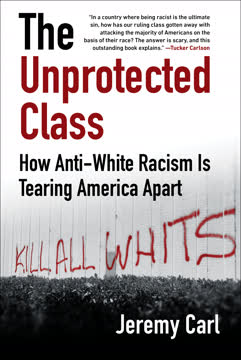

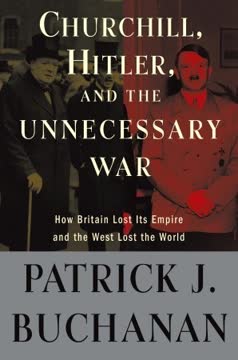
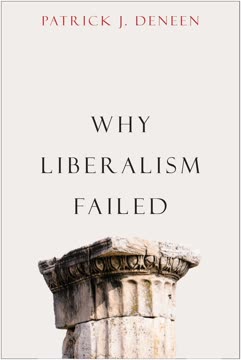
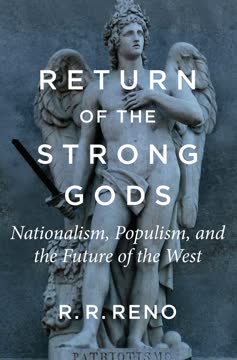
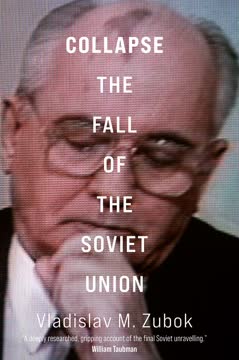
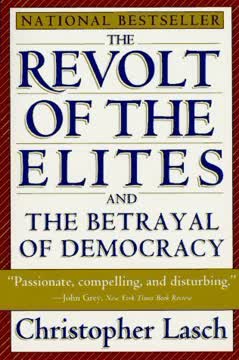

Download PDF
Download EPUB
.epub digital book format is ideal for reading ebooks on phones, tablets, and e-readers.
